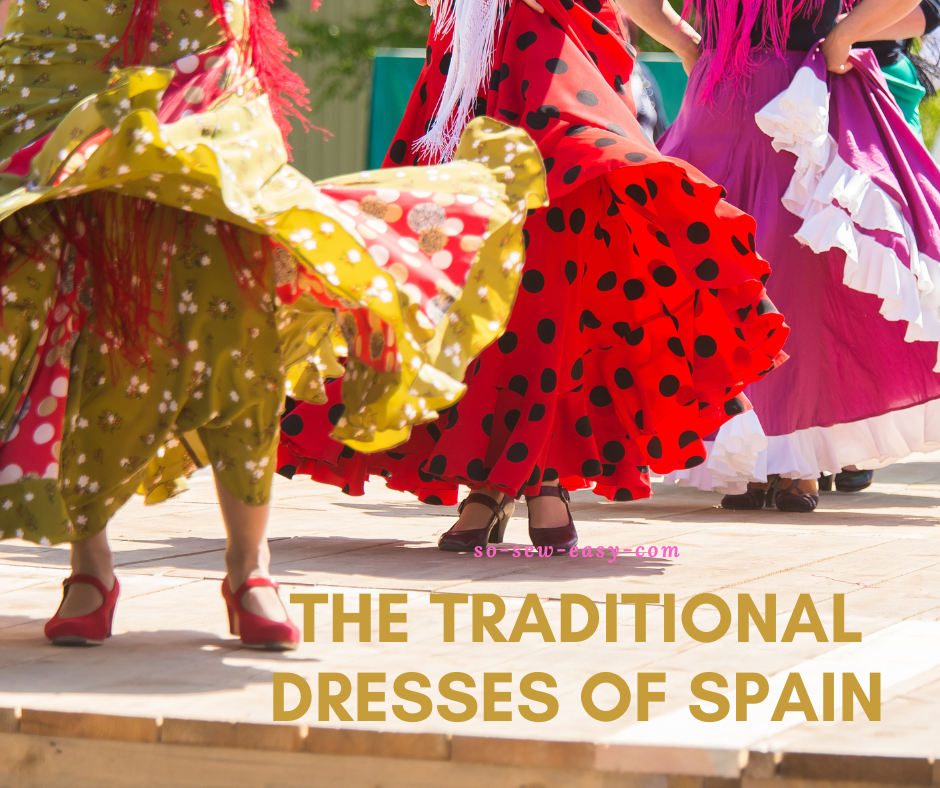
Spain has a rich and varied history which is reflected in its traditional clothing. The country has been influenced by a number of different cultures throughout its history, including the Celts, Romans, Visigoths, and Moors. Each of these groups has left its distinct mark on Spanish fashion. This is seen particularly well in the evolution and variety of the traditional dresses of Spain.
A Summary Of History
One of the oldest settlers of the Iberian peninsular were the Celts. They settled in the northern regions of the country and were known for their woollen garments and intricate designs. They were conquered by the Romans in the 2nd century BC. The Romans introduced the toga, which was worn by both men and women, as well as a number of other well-known pieces of clothing, some of which are featured in this article on the history of the skirt.
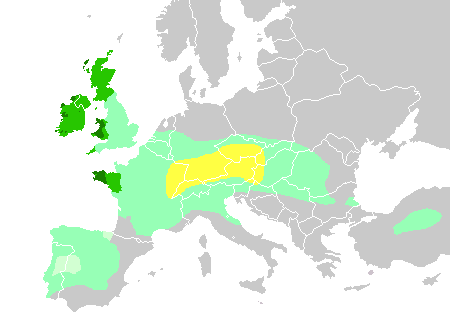

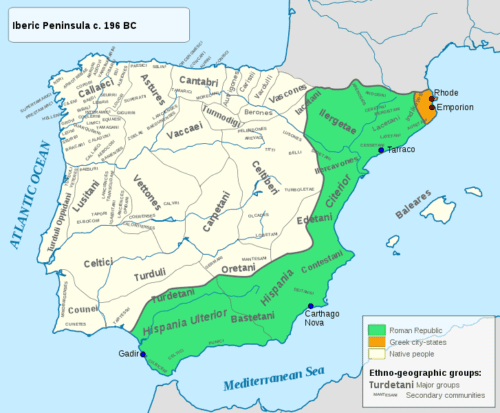

During the Visigothic period (5th-8th century AD), Spanish clothing took on a more Germanic influence. Men wore tunics and trousers, while women wore long dresses with a distinctive “keyhole” neckline. This period also saw the introduction of the mantilla, a traditional Spanish veil worn by women. You will note how familiar the clothing of this period is to us. The basic structure of fashion has not changed in a very long time.
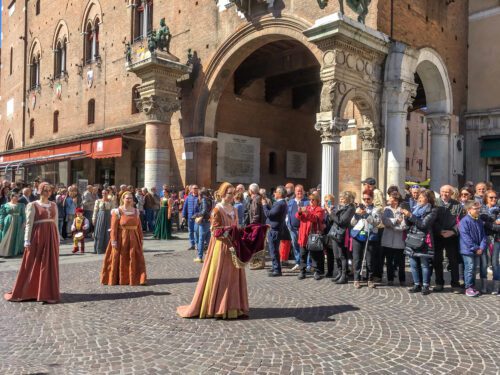

In the 8th century AD, the Moors conquered Spain and brought with them a whole new set of fashion influences. The Moors introduced silk and cotton, which were used to make flowing garments that were often decorated with intricate embroidery. The mantilla, which had originated in the Visigothic period, saw even more popularity under the Muslims.
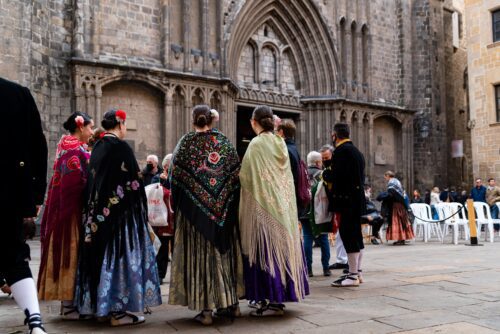

During the Reconquista, which lasted from the late 11th century to the late 15th century, Spanish fashion was heavily influenced by both Islamic and Christian culture. As the Christian kingdoms of Spain pushed the Muslim Moors out of the country, they adopted many of the fashion styles and techniques of the Moors. This can be seen in the use of rich fabrics and intricate embroidery in clothing worn by the Spanish nobility during this time. The use of vibrant colors, gold and silver thread, and geometric patterns became a hallmark of Spanish fashion during this time.
In the Renaissance, Spanish fashion became increasingly opulent, reflecting the grandeur of the Spanish court. Court dress was heavily adorned with jewels, lace, and embroidery, and was characterized by long, flowing garments and large, plumed hats. The Spanish Empire in the 16th and 17th centuries spread the influence of Spanish fashion throughout Europe, with many European courts adopting the fashion styles of the Spanish court.
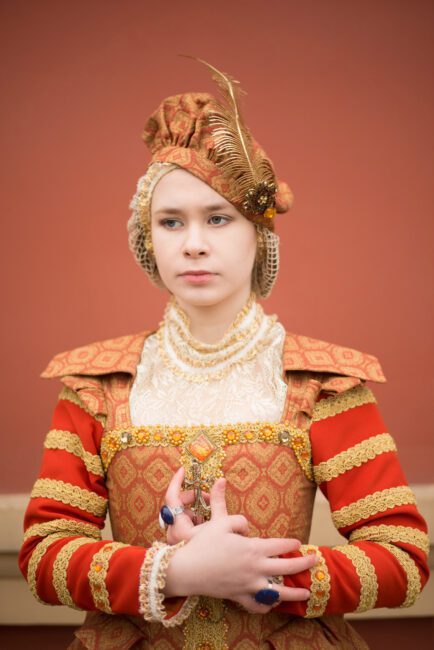

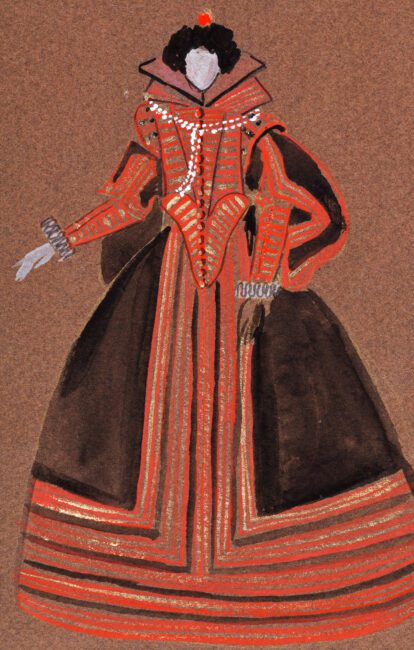

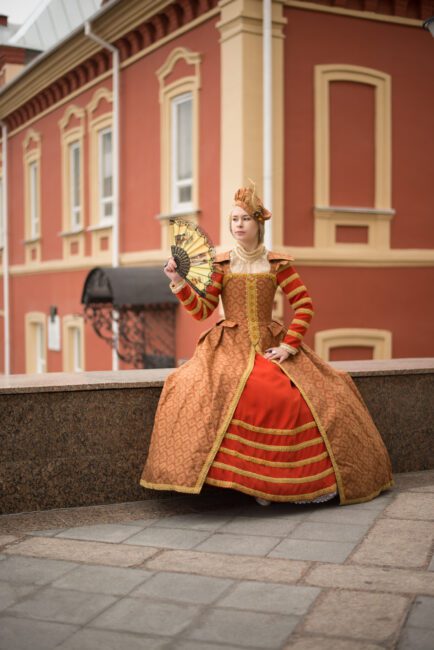

In the early 19th century, during the War of Independence against Napoleonic occupation, Spanish fashion began to incorporate more simple and elegant elements, such as tailored suits for men and simple, flowing dresses for women. This change in fashion reflected the growing desire for simplicity and practicality in the wake of the war.
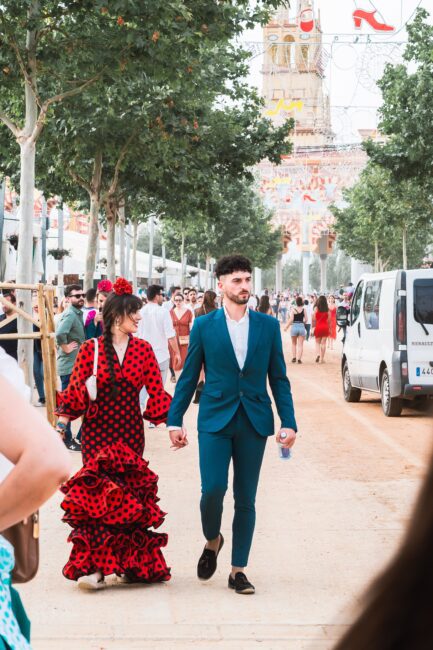

Today, Spanish fashion is known for its mix of traditional and contemporary styles. Designers like Cristobal Balenciaga and Manuel Pertegaz have left a lasting impact on the fashion industry, with their work combining elements of traditional Spanish fashion with modern design techniques. Spanish fashion also reflects the cultural diversity of the country, with influences from regions such as Catalonia and Andalusia. In recent years, Spanish fashion designers have been gaining increasing recognition and acclaim in the international fashion scene.
Traditional Dresses Of Spain And Her Regions
In modern times, traditional Spanish clothing has evolved, but certain garments, such as the flamenco dress, the mantilla, and the traditional bullfighter’s suit (traje de luces) are still worn today in special events. Spanish folk costumes vary by region and feature different garments, fabrics, colors, and accessories depending on the area, giving a unique cultural experience.
The flamenco dress
One of the most famous traditional dresses of Spain is the flamenco dress. The flamenco dress is often associated with the Andalusian region of Spain, and it is worn by women who perform the traditional Spanish dance known as flamenco. The dress is typically made of a lightweight, flowing fabric and is distinguished by its full skirt and ruffled collar.
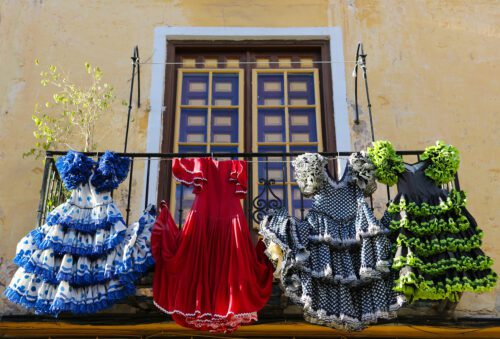

It is often brightly colored, with red, orange, and yellow being popular choices. The dress is usually paired with a shawl or scarf, known as a mantón, which is draped over the shoulders and worn as a sign of elegance and femininity. The dress can be worn with or without a corset, although corsets were historically worn to create a more dramatic and flattering silhouette.
The Mantilla
Another traditional dress from Spain that is well-known is the mantilla. The mantilla is a type of head covering that is worn by women, particularly during religious ceremonies such as weddings and processions. The mantilla is typically made of lace and is worn over the head, with the edges draping over the shoulders.
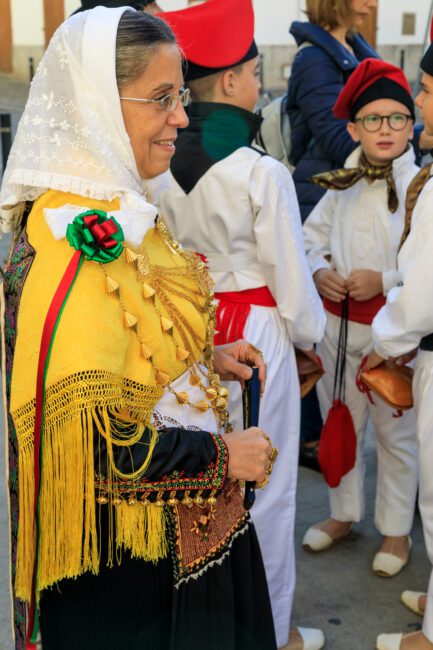

The mantilla is often paired with a traditional Spanish dress known as the traje de gitana, which is worn by women from the Roma community in Spain. This dress is characterized by its full skirt, high waist, and tight bodice, and is often made of brightly colored fabrics.
The Galaico
The traditional dress of Galicia, known as the galaico, is also worth mentioning. The dress is worn by women in the region of Galicia, and is characterized by its long full skirt and high-necked blouse. The dress is usually made of wool and is adorned with intricate embroidery.
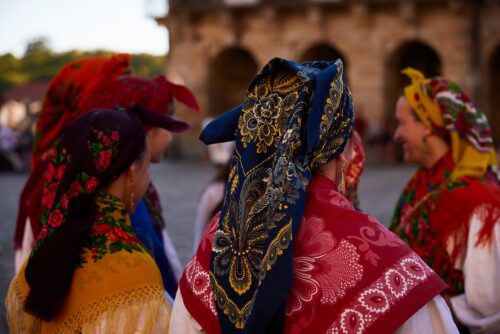

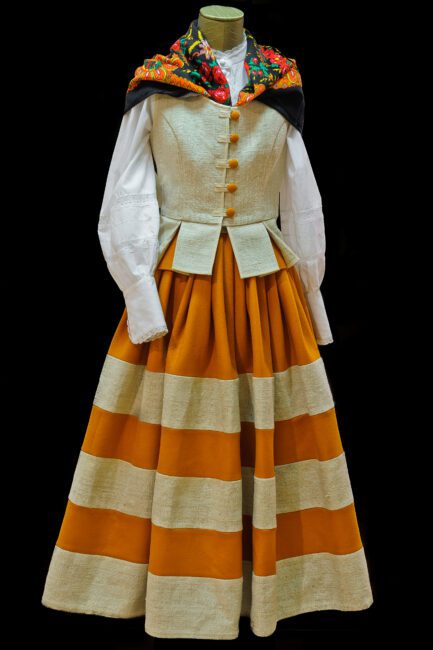

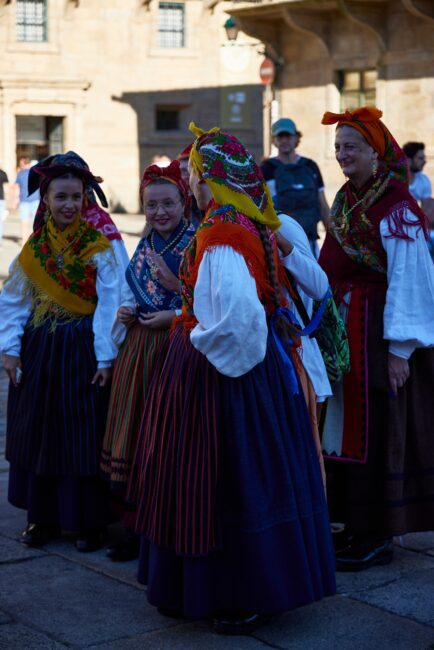

The traditional dress of Galicia is also worn with a shawl, known as a manta, which is often made of silk or satin and is embroidered with designs that are specific to the region. The dress is usually completed with a scarf and a traditional head covering called a pañuelo.
Asturias Region
The traditional dress of Asturias is also quite unique. The Asturian dress is characterized by its long full skirt and tight bodice, with men wearing it paired with a traditional vest and hat. The dress is usually made of wool or linen, and is often adorned with intricate embroidery. Men also have traditional clothing known as ‘chaleco' which is a jacket and trousers combination that is paired with waistcoat and hat.
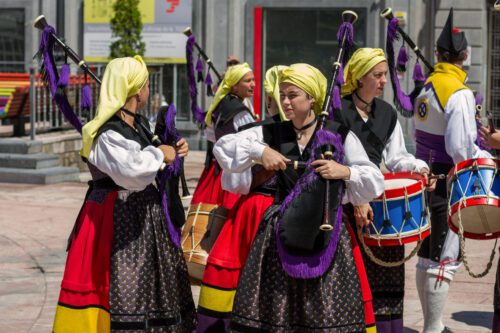

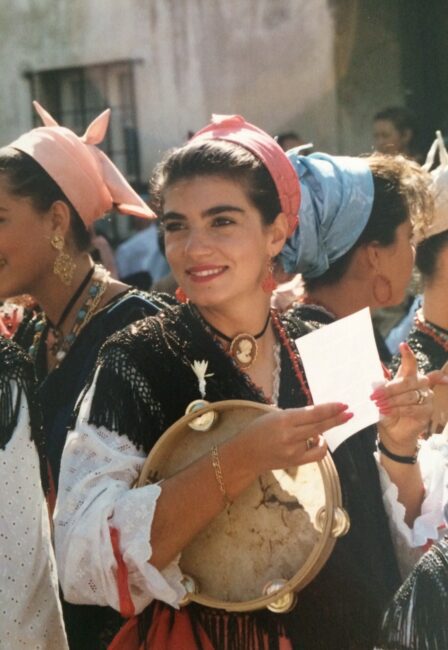

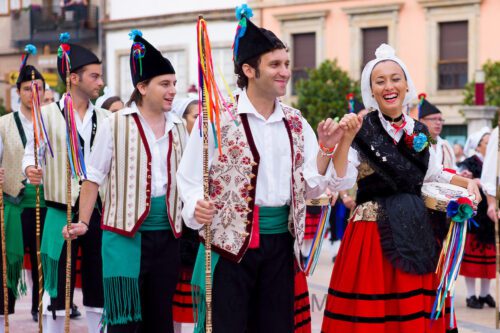

Catalonia Region
The traditional dress for women in Catalonia, a region in northeastern Spain, is known as the “Catalan Dress” or “La Faldilla.” The dress consists of a long skirt, a white blouse, a scarf or shawl, and a headpiece. The skirt is typically made of wool or cotton, and is usually black or dark blue. The blouse is usually white and made of linen or cotton, with a high neck and long sleeves. The scarf or shawl is worn over the shoulders and is often brightly colored. The headpiece, known as the “cofia,” is a white bonnet or cap that covers the hair.
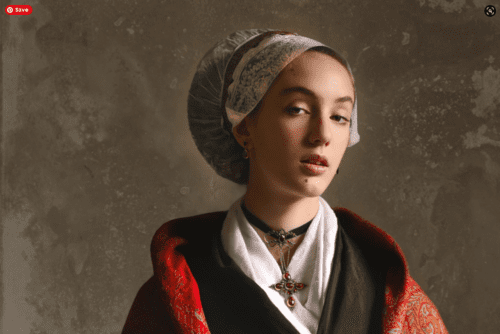

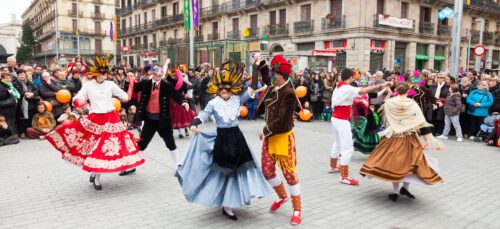

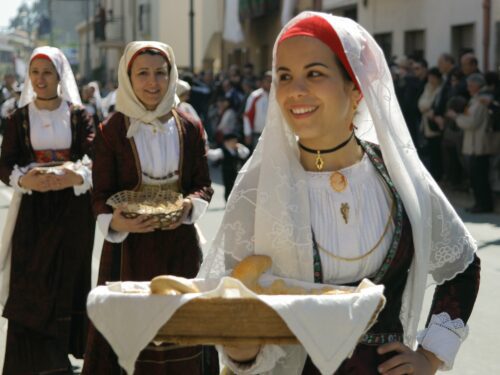

The Future Of Traditional Garments In Spain
Traditional clothing in Spain still holds a rich cultural and historical significance, representing the country's heritage and identity. These clothes are likely to continue to be worn for special occasions and cultural events, and may even experience a resurgence in popularity as people seek to connect with their cultural heritage and traditions.
Additionally, traditional clothing is not only worn for special occasions such as weddings and festivals, but also as a part of daily life in some regions. For example, in rural areas, people still wear traditional clothing on a daily basis. A renewed appreciation for the craftsmanship and artistry of traditional clothing will ensure that these garments continue to be cherished and passed down for generations to come.
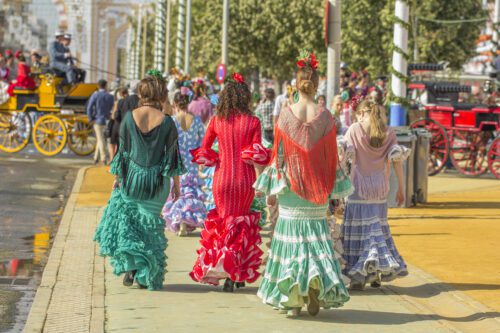

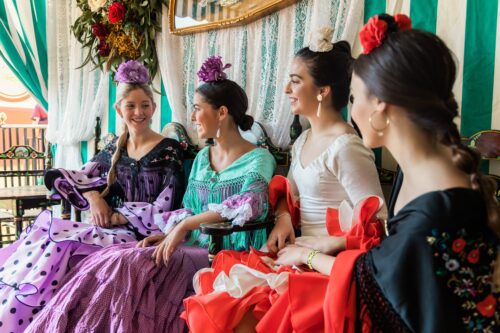

There are several organizations in Spain that promote traditional clothing, such as The Spanish Association of Traditional Costumes, The National Association of Folklore and Traditional Costumes of Spain and The Spanish Association of Traditional Dances and Costumes. These organizations work to preserve and promote traditional Spanish costumes and folk traditions, they organize events, exhibitions and festivals to showcase traditional clothing and promote cultural awareness and preserve cultural heritage.
Let me know if you enjoyed this article on the traditional dresses of Spain. Please know that a country like Spain with such a long and rich history can never be examined fully in such a short article. There are many peoples and regions not even mentioned above, but the article can only be so long.
Where do you want us to look next? Comment below!








Thank you for this article! My mother was from Malaga and grew up in Sevilla. She used to tell me stories from school about performing the Flamenca. I have her comb and shawl. I also have a small shawl given to me from my abuela when I was a teen. I so want to make a dress in red with black dots!
That is a tiny portion of the variety of spanish culture. Spain is a small country with lots of different regions and languages and, of course, dresses. I am from the Basque Country…
I enjoyed reading this it is a mini history lesson. Thank you.
So enjoyed your enthusiasm around costumes in history!
Really enjoyed the history of dress in Spain
This article is a lovely history of traditional Spanish folklore outfits. My family is from Cataluna and Galicia and this brought back memories of my heritage. I’m so glad that to this day, they keep these dress traditions alive and loved. Thank you!
Thank you for the kind words, I’m glad you enjoyed the article!
The dresses and colors are great. Also love the history about the clothes.